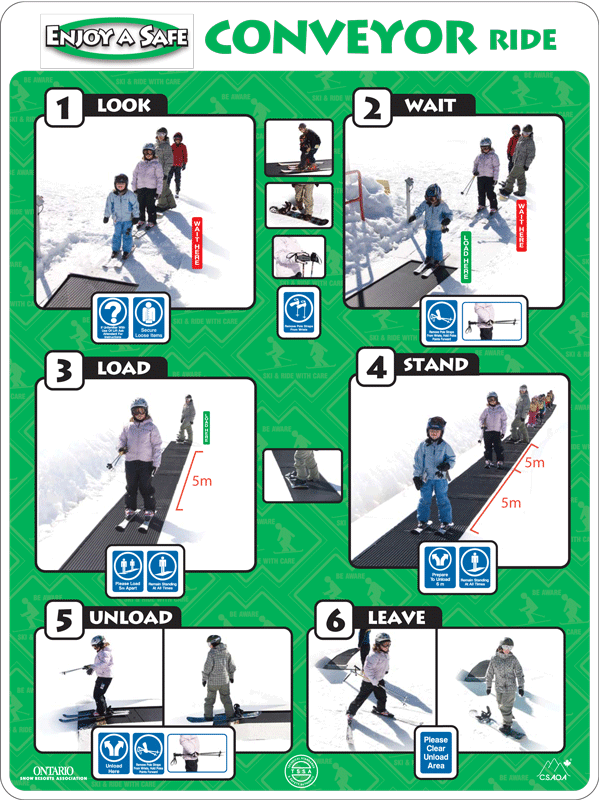
Snowboarding Safety: A Comprehensive Guide to Hitting the Slopes Safely
Snowboarding is an exhilarating winter sport that offers a thrilling blend of adrenaline and breathtaking scenery. However, the slopes can be unforgiving, and injuries are a real possibility without proper precautions. This comprehensive guide provides essential safety tips for snowboarders of all skill levels, from beginners taking their first tentative runs to seasoned pros tackling challenging terrain.
I. Before You Hit the Slopes: Preparation is Key
A safe snowboarding experience begins long before you even set foot on the mountain. Thorough preparation is paramount to minimizing risks and maximizing enjoyment.
-
Physical Fitness: Snowboarding demands physical stamina and strength. Engage in regular cardiovascular exercise and strength training, focusing on legs, core, and shoulders, to improve balance, endurance, and injury resistance.
-
Gear Up Properly: Invest in high-quality snowboarding gear that fits correctly and meets safety standards. This includes:
- Snowboard: Choose a board appropriate for your skill level and riding style. Beginners should opt for shorter, more forgiving boards.
- Boots: Properly fitted boots are crucial for comfort, control, and injury prevention. Ill-fitting boots can lead to blisters, ankle injuries, and reduced performance.
- Bindings: Ensure your bindings are correctly adjusted to your boot size and riding style. Incorrectly adjusted bindings can result in serious injuries.
- Helmet: A helmet is non-negotiable. Head injuries are a major concern in snowboarding, and a helmet significantly reduces the risk of severe trauma. Choose a helmet that meets safety standards and fits snugly.
- Protective Gear: Consider additional protective gear, such as wrist guards, knee pads, and hip protectors, especially for beginners or those attempting challenging runs.
- Appropriate Clothing: Dress in layers to regulate body temperature and stay warm and dry. Waterproof and breathable outerwear is essential. Avoid cotton clothing, as it retains moisture and can lead to hypothermia.
- Sunscreen and Sunglasses: Even on cloudy days, the sun’s reflection off the snow can cause sunburn and eye damage. Apply sunscreen with a high SPF and wear sunglasses or goggles that provide UV protection.
-
Check Weather Conditions: Before heading out, check the weather forecast and avalanche reports, especially if venturing into backcountry areas. Be aware of potential hazards such as strong winds, heavy snowfall, and changing snow conditions.
-
Know Your Limits: Start slowly and gradually increase the difficulty of your runs as your skills improve. Don’t attempt runs that are beyond your capabilities. It’s better to err on the side of caution and choose easier slopes until you feel confident.
-
Inform Someone of Your Plans: Let a friend or family member know where you’re going, when you expect to return, and who you’re snowboarding with. This is crucial in case of an emergency.
II. On the Slopes: Mastering Safe Snowboarding Techniques
Once you’re on the slopes, maintaining awareness and employing safe riding practices is paramount.
-
Control Your Speed: Maintain a speed that you are comfortable with and that allows you to react to changing conditions. Avoid excessive speed, especially on unfamiliar terrain.
-
Maintain Awareness of Your Surroundings: Constantly scan your surroundings for other snowboarders, skiers, obstacles, and potential hazards. Be aware of your blind spots and anticipate the actions of others.
-
Proper Signaling: Learn and use standard snowboarding signals to communicate your intentions to other riders. This helps to prevent collisions.
-
Safe Stopping Techniques: Practice various stopping techniques, such as using your heels or toes to slow down or come to a complete stop. Be prepared to stop quickly and safely in case of unexpected events.
-
Falling Safely: Learn how to fall properly to minimize the risk of injury. Try to relax your body and protect your head and vital organs.
-
Avoid Obstacles: Be aware of and avoid obstacles such as rocks, trees, and other fixed objects.
-
Stay Hydrated and Fueled: Carry water and snacks to maintain energy levels and stay hydrated, especially on longer runs.
-
Take Breaks: Take regular breaks to rest and avoid fatigue, which can impair judgment and increase the risk of accidents.
III. Dealing with Specific Hazards:
-
Avalanches: Avalanches are a significant risk in backcountry snowboarding. Take an avalanche safety course, carry appropriate safety equipment (beacon, shovel, probe), and always check avalanche forecasts before venturing into backcountry terrain. Never snowboard alone in avalanche terrain.
-
Tree Wells: Tree wells are dangerous depressions in the snow around trees. They can be difficult to see and can trap snowboarders, leading to suffocation. Avoid snowboarding near trees, particularly in areas with deep, powdery snow.
-
Collisions: Collisions with other snowboarders or skiers are a common cause of injury. Always maintain a safe distance from other riders, be aware of their movements, and communicate your intentions.
-
Weather Changes: Be prepared for sudden changes in weather conditions, such as strong winds, heavy snowfall, or reduced visibility. If conditions deteriorate, seek shelter and consider postponing your snowboarding session.
IV. Post-Snowboarding Care:
-
Check for Injuries: After snowboarding, check yourself for any injuries, no matter how minor. Seek medical attention if necessary.
-
Stretch and Recover: Stretch your muscles to improve flexibility and prevent stiffness. Rest and allow your body to recover from the physical exertion.
-
Proper Gear Storage: Store your snowboarding gear properly to protect it from damage and ensure it’s ready for your next trip to the slopes.
V. Conclusion:
Snowboarding is an incredible sport that offers a wealth of thrills and unforgettable experiences. However, it’s crucial to prioritize safety to ensure a fun and injury-free experience. By following these safety tips and taking appropriate precautions, you can significantly reduce your risk of accidents and make the most of your time on the slopes. Remember, preparation, awareness, and respect for the mountain are key to a safe and enjoyable snowboarding adventure. Always remember that safety should never be compromised for thrills. A safe snowboarding experience is a memorable one.



